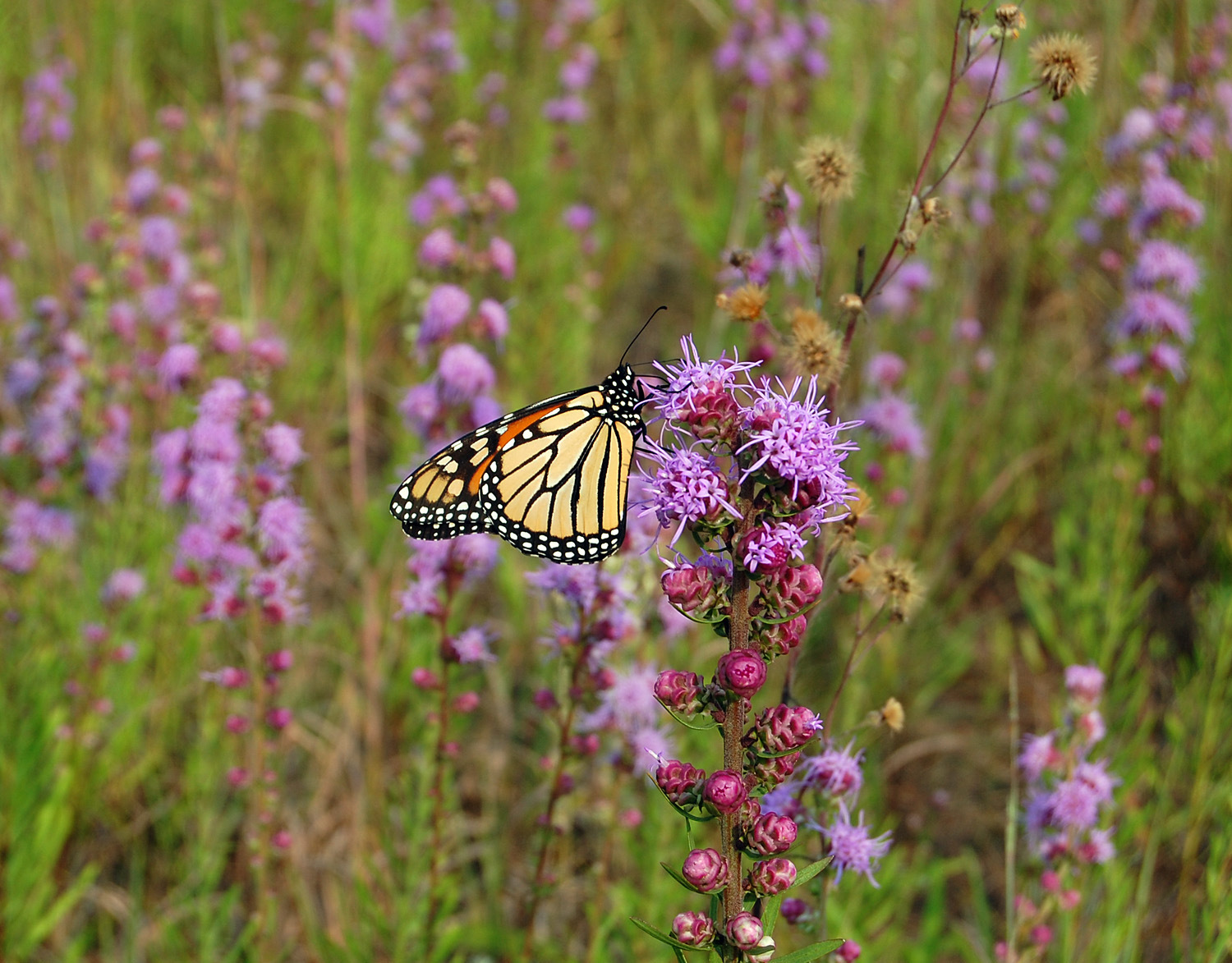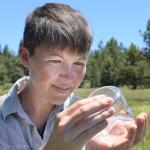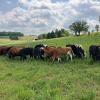Together, these publications contribute to our growing understanding of how human actions can hurt—or help—monarchs.
Joan Mosenthal DeWind was an early member of the Xerces Society and a keen supporter of getting young people involved in invertebrate conservation. In her memory, her husband Bill DeWind established a student research endowment fund, which is administered by the Xerces Society.
Each year, the DeWind Committee awards at least two grants to college or graduate students conducting research in Lepidoptera conservation. Project proposals are ranked based on relevance to conservation and quality of science. The intention behind these awards is that students will further our collective knowledge about some aspect of conservation relating to butterflies and moths, and that they will continue to work in this field after finishing their degree. Many students go on to publish research that has been supported by a DeWind Award.
Two DeWind alumnae, Ania Majewska and Paola Olaya-Arenas, recently published research about monarchs. Ania is a PhD candidate in the Odum School of Ecology at the University of Georgia. Her research focuses on how wild pollinators interact with garden habitats and she received a 2015 DeWind award for her project titled “Gardening with good intentions: examining the effects of tropical milkweed (Asclepias curassavica) on monarch migration and disease.” Paola was a 2016 award winner for her research on nontarget effects of neonicotinoid insecticides on monarch butterflies. She currently is a PhD student in the Department of Entomology at Purdue University, where her research focuses primarily on monarchs.
Brief summaries of the recently published papers are below—click on each title to view the publication in its entirety.

Majewska et al. 2019, “Multiple transmission routes sustain high prevalence of a virulent parasite in a butterfly host” (Proceedings of the Royal Society B)
Through a field study and modeling work, this study shows that a combination of disease transmission routes—i.e., ways in which diseases move between butterflies—cause high infection rates of the protozoan parasite Ophryocystis elektroscirrha (OE) on tropical milkweed (Asclepias curassavica). While the main route of OE transmission is from a female adult to her offspring, this study shows that adult-to-adult and adult-to-environment routes are also important, especially early in the season. Together, these multiple transmission routes can contribute to substantial declines in local monarch populations. As stated in the paper: “We estimate that OE in resident monarch populations reduces monarch population size by about half, relative to population size expected in a parasite-free state.” Future studies could build off of the transmission and mortality estimates presented in this study to better model the impact that OE and tropical milkweed may be having on not just local monarch populations, but also on the entire eastern (or western) monarch population.
Majewska & Altizer 2019, “Exposure to non-native tropical milkweed promotes reproductive development in migratory monarch butterflies” (Insects)
This study showed experimentally how monarch exposure to tropical milkweed influences monarchs’ reproductive status during their fall migration. Caterpillars reared under fall-like conditions and fed tropical milkweed showed greater reproductive activity as adults (measured as mating behavior in males and egg development in females) compared to caterpillars who ate native milkweed. Wild-caught, fall migrant adult females exposed to tropical milkweed in the fall showed greater egg development compared to those exposed to native milkweed or no milkweed. Meanwhile, wild-caught, fall migrant adult males exposed to native milkweed showed greater mating activity compared to those exposed to tropical milkweed or no milkweed. Although the phrase “greater mating activity” may sound positive on the surface, the implication is that when exposed to tropical milkweed, monarchs are more likely to breed in the fall, a time when they should be migrating, thus disrupting their annual cycle.
Paola-Arenas & Kaplan 2019, “Quantifying pesticide exposure risk for monarch caterpillars on milkweeds bordering agricultural land” (Frontiers in Ecology and Evolution)
This study examined the pesticide risk that monarchs face in agricultural areas. Over a period of two years, the authors tested milkweed and soil growing near farm fields in Indiana for commonly used herbicides, insecticides, and fungicides. The tests showed that 14 different pesticides (including some neonicotinoid insecticides, which are known to kill and otherwise harm monarchs) were present in milkweed leaves. The levels of contamination varied between sites and also over the course of a year. While the effects of most pesticides on monarchs haven’t been tested, the authors conclude that “these data suggest that monarch caterpillars frequently consume a diversity of pesticides in their diet.”
Together, these three publications contribute to our growing understanding of how human actions can hurt—or help—monarchs. It’s clear that our society’s reliance on pesticide-intensive row crop agriculture exposes monarchs to chemicals which can harm them. It is also clear that planting tropical milkweed can do more harm than good by spreading disease and interrupting the species’ migration. The good news is that these studies’ findings underline the importance of people working and living in rural, agricultural areas and people in urban and suburban areas in creating and protecting native, pesticide-free monarch habitat in their communities. Let’s keep working together to protect the monarch’s incredible migration!
Learn More about the DeWind Award
Read about the 2019 awardees on our blog.
Learn More about Monarch Conservation
Read about our monarch conservation work.
Western Monarch Call to Action.
On the blog: “Tropical Milkweed--a No Grow?”
How You Can Help
Find native milkweed and recommended monarch nectar plants for your region here.
Learn more about reducing pesticide use and impacts.





